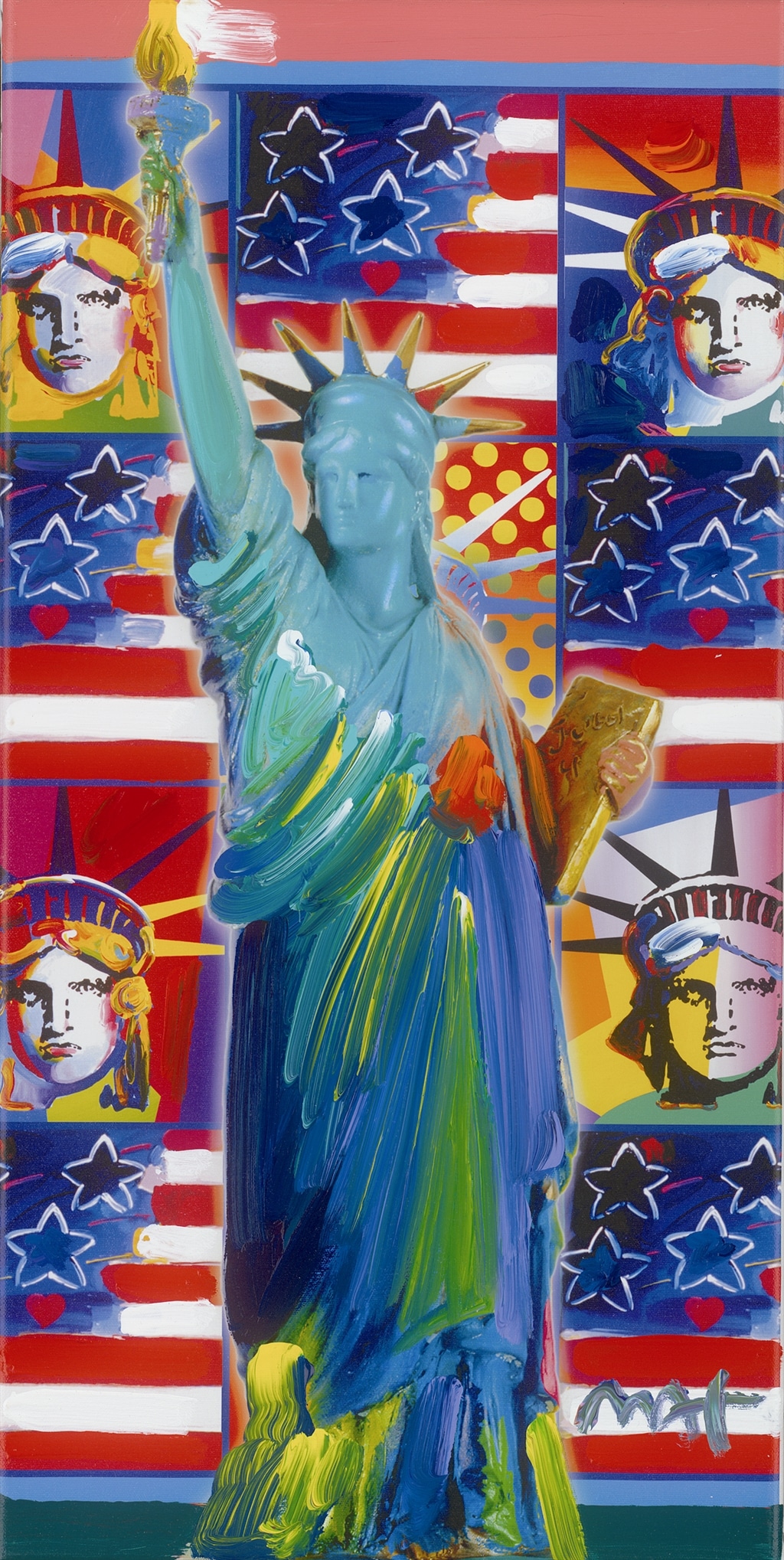September Thoughts: Reflecting on 9/11 and Public Art
Written by MORRIS SHAPIRO, Park West Gallery Director
As the month of September draws to an end, it seems inevitable that we reflect back on the apocalyptic events that took place on the 11th day of this month in 2001, and our perspective now, ten years later.
I was in New York on the ten year anniversary of September 11, and spent that morning at the studio of Peter Max with a group of Park West Gallery collectors.
Max, as everyone probably knows, is the American artist most associated with raising funds for various 911 relief funds by selling his American-themed imagery through his website and donating his proceeds. He also painted a portrait of each firefighter who perished at the Twin Towers and the Pentagon, and gave the paintings to the surviving family members.
Being there with Max, all of us with our individual memories of where we were that day, and taking it all in, was riveting and emotional. The city itself was on alert and there was a palpable collective consciousness of poignancy, edginess and melancholy permeating.
Another significant event which took place the weekend I was there was the opening of the September 11 National Memorial, first privately opened to the families on the 11th and officially to the public on September 12.
Designed by Israeli-American architect, Michael Arad, the monument consists of two square pools tracing the outline of where the towers once stood. These will eventually be flanked by 400 trees surrounding them. I didn’t visit the memorial, but as I observed all the media attention surrounding it, while being so close by on that day, I couldn’t help but reflect about public art and how it still retains a powerful attraction to us even in our current overly media-drenched and instantaneous society.
Art historian Nigel Spivey in his seminal book and video series, “How Art Made the World” (Basic Books; 2006), calls attention to the notion that art was the pathway to much of human technology through the millennia. He cites the probable cause of the invention of agriculture (where Homo sapiens abandoned hunting and gathering) as mankind’s need to stay in a singular location. He needed to invent the technology of growing his own food to achieve this goal, and the reason—to be in proximity of “public art” and the desire to be in its presence and to plumb its spiritual mysteries.
Even now, some 60, 000 years later, a work of art left open to everyone’s eyes who passes by, large and scaled to the enormous urban architecture which frames it and resonating with a shared meaning, can still hold our attention and move us in ways that nothing else can match. Our past is linked to our present. The mythology of our own time is communicated to us for reflection, contemplation and even perhaps, as in the case of the September 11 Memorial, healing.
It is comforting to know that as enlightened occupants of the 21st Century, we are still linked to the collective and embedded need for art to speak to us, just as it has done since the dawn of our consciousness. And just as it will always do no matter what befalls.
To read more by Morris Shapiro, visit his blog: Who Killed Art?
Park West Gallery has enjoyed a relationship with Peter Max since the 1970s, and is the artist’s largest and longest-running dealer in the world. Peter Max fine art is available at Park West Gallery cruise art auctions throughout the world or may be purchased through our gallery in Southfield, Michigan. Browse selections from the Park West Gallery/Peter Max Collection online →






